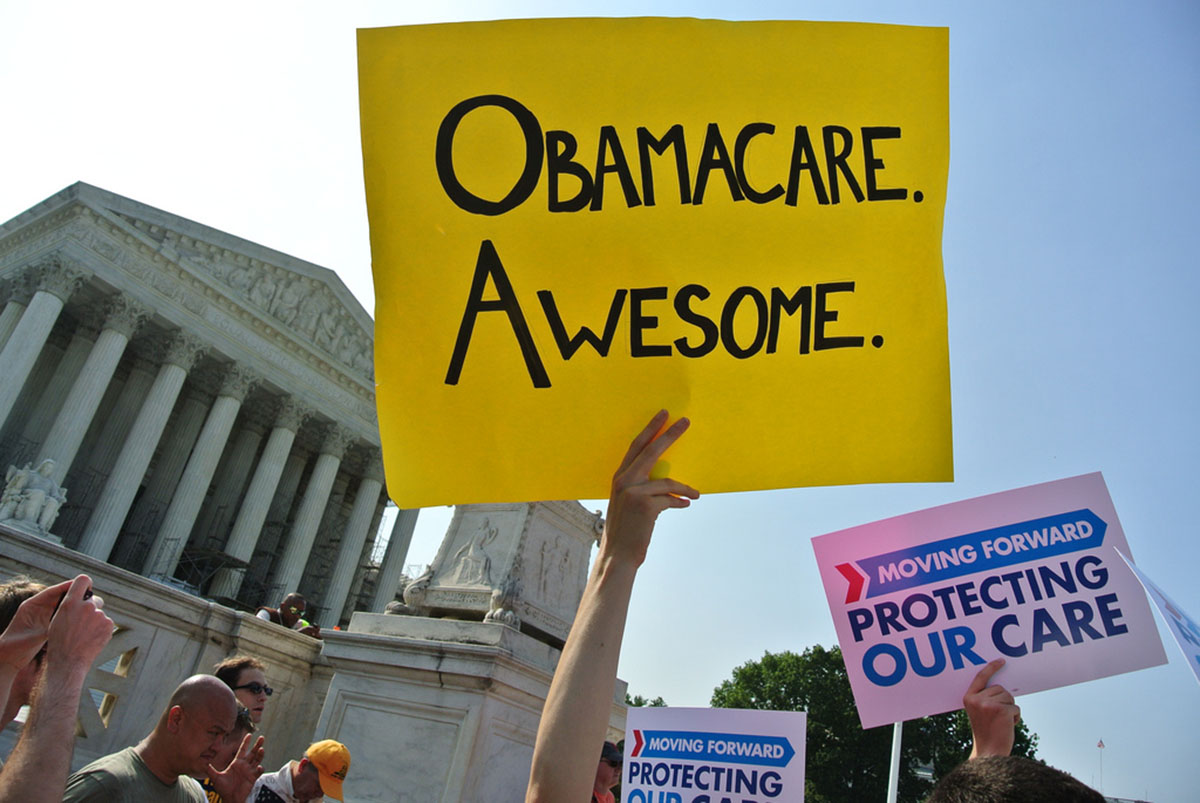At the end of the first year of full implementation of the Affordable Care Act, also known as Obamacare, health insurance coverage made possible is getting mixed reviews.

Obamacare Pluses and Minuses
On the positive side, anyone who is not already on Medicare can sign up for coverage through either their state insurance exchange or the federal insurance exchange. There are no exclusions for preexisting conditions. There are no limits to how much insurance will pay. Many plans offer 100% coverage after policyholders pay a $500 to $5000 (in some cases, $10,000) deductible. There are even plans from healthcare.gov that offer a $0 deductible. Even better, a majority of Americans are eligible to get all or part of their insurance premiums paid for with tax credits, and many also get help with their deductibles in amounts of up $6000 per year, although this is paid directly to the insurance company.
On the negative side, many Americans complain that coverage under the Affordable Care Act simply is not affordable. Individuals who in 2015 will earn more than $46,680 per year, couples who will earn more than $62,920 per year, and families of four who will have an income over $95,400 per year don't get any subsidies to offset their premiums. The cost of coverage for a family of four can be quite substantial. A family of four in Dublin, Georgia, two parents in their 40's with two teenagers, with an income of $100,000 per year, could be offered coverage for $2,560 per month and still have a $4000 annual deductible. They might be able to get coverage for as little as $866 a month, but with a $10,000 deductible.
Why not just go without health insurance? The fact is, the tax penalty for not having health insurance is not very high. a maximum of $325 for an individual or $975 for a family, much less than the cost of insurance. But a trip to the doctor for a broken arm can cost $5,000 to $20,000, a five-minute heart catheterization procedure can cost $125,000, and an autoimmune disease or cancer can cost $120,000 to $200,000 per year in drug costs alone. Not having health insurance can invite financial disaster.
Whose Premiums Are Going Up the Most?
Most premium increases have been very local. That family in Dublin, Georgia, mentioned above, has to deal with a 33% increase in premiums in 2015. A family in Varnell, Georgia, a few hours away, probably has a 12% premium reduction. In some small states, like Vermont, a single company dominates the market and premiums are going up. But in some larger states, like California, multiple companies have moved into the market and premiums are going down.
See Also: How Will The Affordable Care Act Affect Women?
Premiums are going up the most in some markets in Georgia, Tennessee, Indiana, Michigan, New York, and Oregon. Premiums are going down in some markets in Colorado, California, and Maine. But it is usually possible to find a less expensive plan that still meets your or your family's needs.
Getting The Most Coverage For Your Money With Obamacare
How can you make the most of your health insurance options available through the Affordable Care Act? Here are some suggestions.

If you have a relatively low income, and you are in relatively good health, look for plans that have $0 monthly premiums.
Bronze plans, which have high deductibles and copays, are more likely to have premiums that are completely subsidized. It is necessary to enter the information for your tax credits on the healthcare.gov site (if you received a subsidy for 2014, you will in most cases continue to receive the same subsidy in 2015), but you may not have to pay any premium at all. If you know you are going to have medical expenses, however, do the math. You may be able to find a policy that you have to pay for that still leaves you will less out of pocket expense than the lowest cost coverage.
If you have a relatively high income, and you are in poor health, be careful about plans that limit your choices among doctors and hospitals.
HMO plans are less expensive than PPO plans, but they also offer fewer choices. In some states, you are limited to doctors and hospitals that are "in-network," who have contracted with the insurance company to provide services at a fixed fee. You do not have any coverage at all for services you get "out of network." In other states, you can get services out of network, but your insurance company will only pay the provider what they pay in-network. You can get stuck with a bill for the difference. Your policy may make an exception for emergency care, but if you are, say, in an out-of-network hospital in a coma after an accident, you can get stuck with a monumental bill that you could do nothing about. If you know you are going to the hospital, it's usually better, if you can find a way to afford it, for you to sign up for a PPO plan.
Silver plans sometimes come with assistance for paying your deductibles.
Individuals and families whose income falls under certain limits ($29,175 for individuals, $59,625 for a family of 4) can get both tax credits for paying their premiums and help with their deductibles. The federal assistance with the deductible is figured into the terms of the plan, so what you will see is instead of a $5,000 or $10,000 annual deductible, perhaps a $500 or even $0 deductible for the year. You can save up to $6,000 a year on your medical expenses this way, and you will never have to pay this money back. However, reduction in deductibles is only available with Silver plans, not Bronze, Gold, or Platinum.
See Also: Race, Income, And Gender In American Healthcare
It is still possible to get health insurance outside of the government-run exchanges, although help with premiums and deductibles is only available for Obamacare. All health insurance policies now have to offer an established minimum coverage, and your preexisting conditions are not a barrier to getting a policy, but the expense of these policies usually is considerably higher.
- Anonymous. 5 Ways to Save from Healthcare Reform. Bankrate.com. http://www.bankrate.com/finance/insurance/ways-save-health-insurance-reform-2.aspx. Accessed 2 December 2014.
- New York Times Interactive. Is the Affordable Care Act Working? 26 October 2014.
- Photo courtesy of Will1ill by Flickr: www.flickr.com/photos/89355994@N05/8136434824/sizes/l
- Photo courtesy of DIBP Images by Flickr: www.flickr.com/photos/diacimages/5566456007


Your thoughts on this